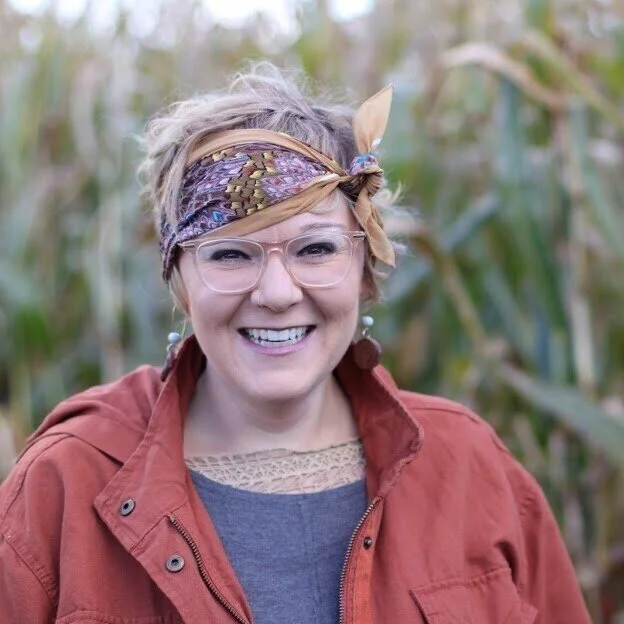Tables
by Dr. Julia Hurlow
When was the last time you found yourself waking up to a situation full of instability? When did you last feel uncertainty loom like a fog over your daily rhythms? When did you last find yourself staring down questions about upcoming transitions, or looking deeply into the ambiguity of what lies ahead?
Sometimes, transitions are chosen.
Other times, transitions are a result of other people’s choices.
And at nearly all times, transitions bring with them a number of emotions experienced at the same time.
The feelings of instability and thoughts of uncertainty are familiar companions in the midst of transition. Dysregulation of routines, rhythms, and rituals--many of which previously offered grounding--is another familiar partner in transition. What we need--day to day, moment to moment--in these times is a confidence that we can discern a way forward in this liminal space.
Throughout Scripture, God’s people have found themselves in places with questions about how to find a way of peace in the middle of unprecedented times. The wilderness, captivity, enslavement, exile, drought, silence, injustice, imprisonment, and poverty are familiar to Israel and the early church. And in those spaces, God’s people called on El Roi, meaning, “the God who sees me.” (Genesis 16:13) This name for God offers the promise of nearness--assurance that the Spirit sees us in the space between.
The Divine is one who sees as well as provides. God is known as Jehovah jireh, which means, “the Lord will provide” (Genesis 22). In the Old Testament, we hear people gathering around God’s promise to provide by coming together to eat. Passover, Feast of the Shelters, New Moon Feasts, and Jubilee Feasts were among celebrations that were offerings of provision from God. Manna and quail were seen as rationed daily offerings from heaven for the Israelites in the desert. Boaz invited Ruth--a widow--to a meal where she ate until she was satisfied. Elijah received a loaf of bread from a widow in need of a hope for care when her jars of flour and oil were seemingly going to run out in the midst of a drought. Daniel ate vegetables as a way to connect with God to gain counsel for the days ahead.
The stories around elements of the table extend through the New Testament narrative, too. Jesus’ first miracle surrounded the table, as he turned water to wine at a wedding. The disciples enjoyed breakfast on the beach with Jesus after a long morning of fishing. Thousands of people were fed from the lunch box of a child. Christ shared meals in homes with tax collectors. Common metaphors for the Kingdom of God include commonplace ingredients of meals and everyday life: sown seeds, savory salt, rising yeast, and multiplied fish and loaves are all part of the Gospels’ counsel on life in the reign of God.
In the New Testament’s account of the resurrection, Jesus’ followers went looking for him, yet found an empty tomb. The disciples started walking home when Jesus joined them on their walk, with their grief belying his true identity as he talked with them along the Emmaus road. Yet upon their arrival at home, the invitation was extended to Jesus in Luke 24 as this group of people were going to sit down to break bread together. When Jesus took the bread, blessed it, and then broke it, the disciples recognized Jesus. Jesus revealed himself through transcending the ordinary, offering divine insight in the simple act of gathering at a table for bread.
The ekklesia--the name used by believers for the early church described in Acts--was known for eating and sharing their belongings with one another. Bread-breaking was a trademark of these fledgling Christian communities. Whether it was sharing the Eucharist or hosting a meal together within their homes, gathering around breaking bread has been a time-honored Christian practice, nourishing our bodies and our connection with one another.
What had been the altar for blood sacrifice all throughout the Old Testament, became for the early church in the New Testament, the table of communion. This is a place of remembrance, forgiveness, and celebration. May this be a place, as Wendell Berry says, to “practice resurrection.”[1]
Gathering around an altar for an animal sacrifice for repentance, an altar of communion to remember, and a shared table for celebration have been places in daily routines to experience grounding that enhances relationship with the Triune God and with others.
The practice of sitting at a table for nourishment can be a place to receive the daily bread (Matthew 6:11). In transitions when instability, uncertainty, and questions are present, the daily provision of the Divine Triune God is present at the table.
____________
[1] Berry, The Mad Farmer Poems, 19.
_________________________________________
Dr. Julia Hurlow is Director of Discipleship at Taylor University in Upland, Indiana. An extensive traveler in both the U.S. and international communities, Hurlow excels at empathy, listening, and nourishing others around the table. With a masters’ degree in counseling and a doctorate in semiotics and future studies, Hurlow’s practices of lament, celebration, and remembrance at the table offer her valuable perspective on Christian life. Her first book--Transcendence at the Table--is available now from Wipf and Stock and Amazon.

